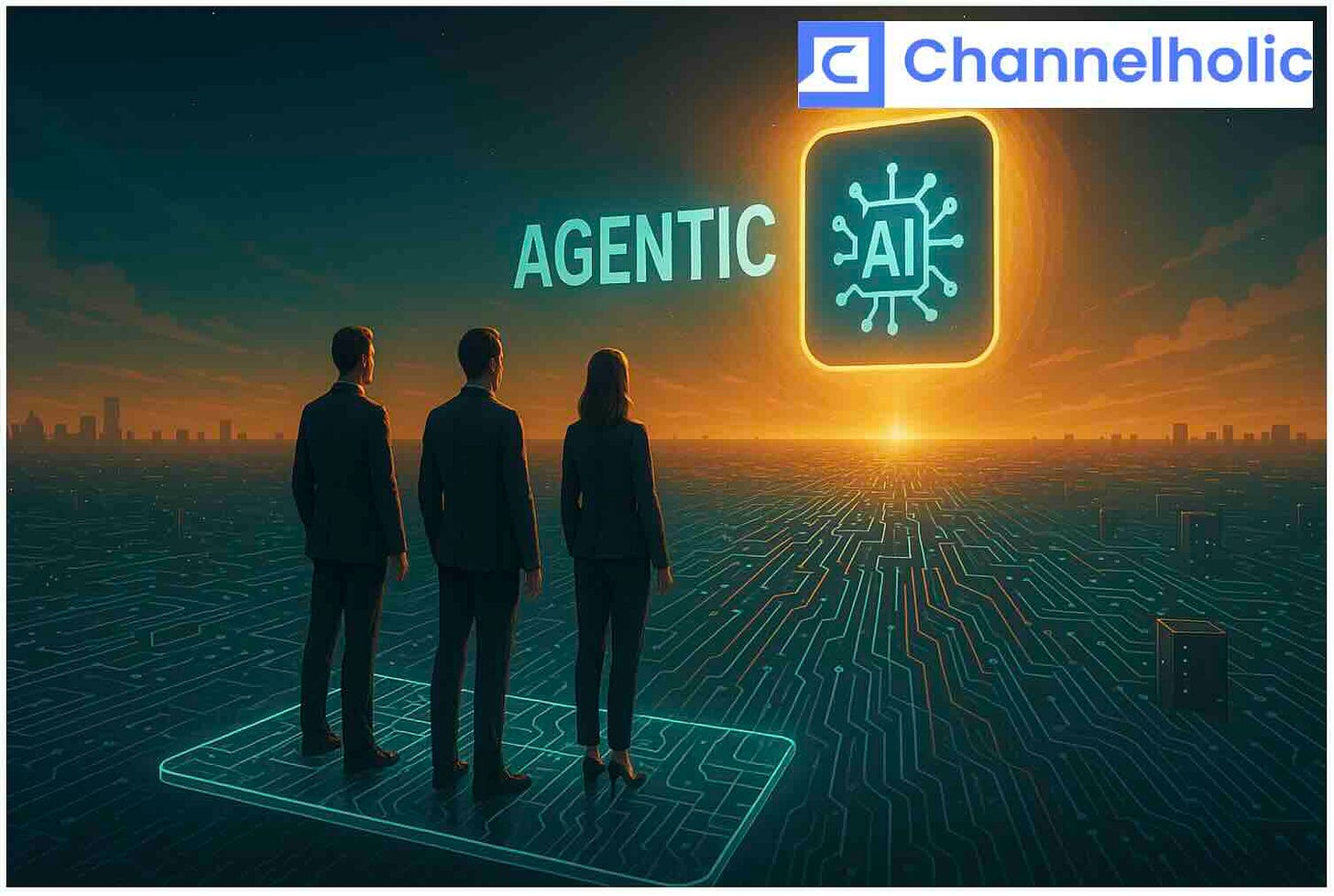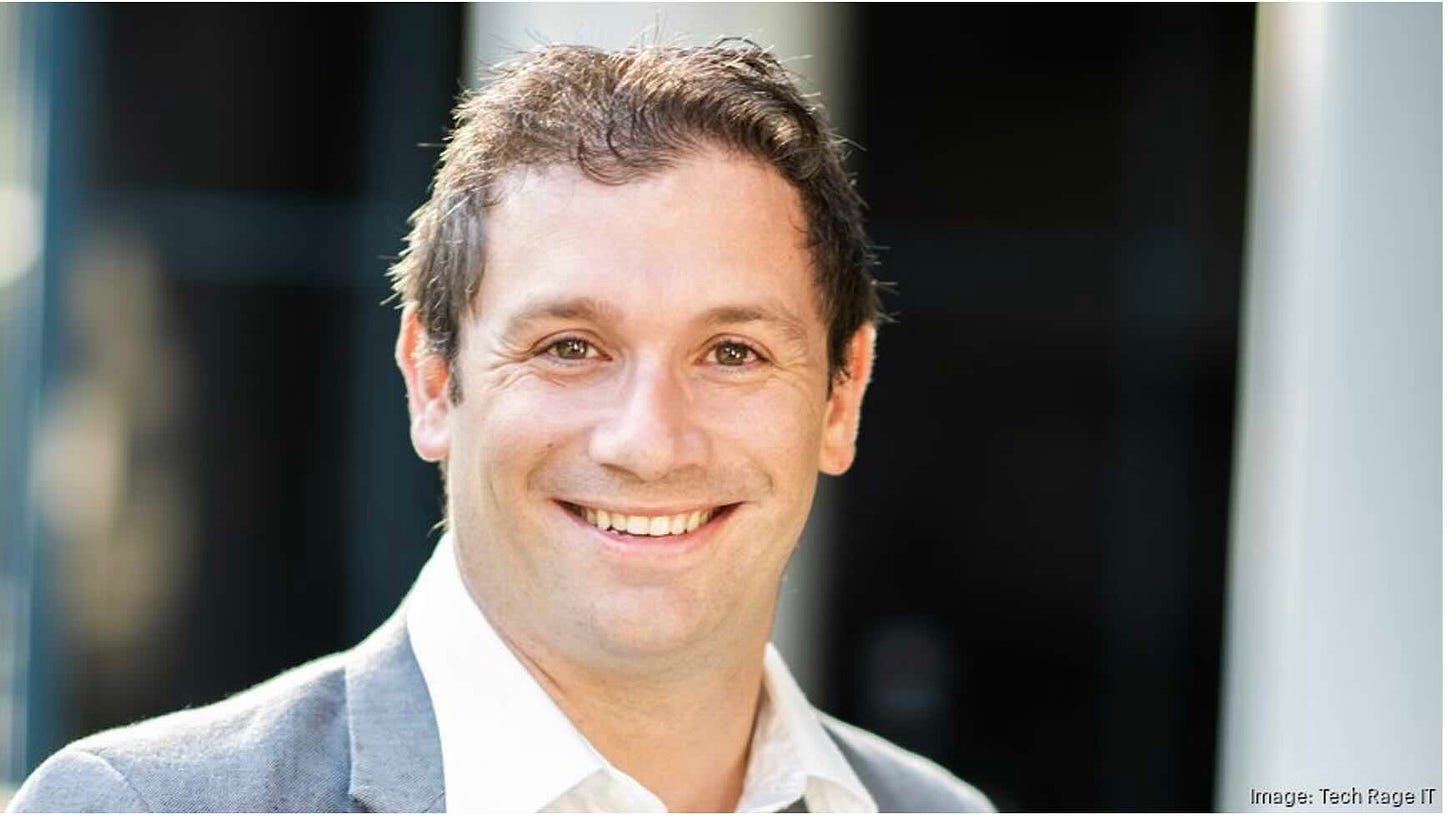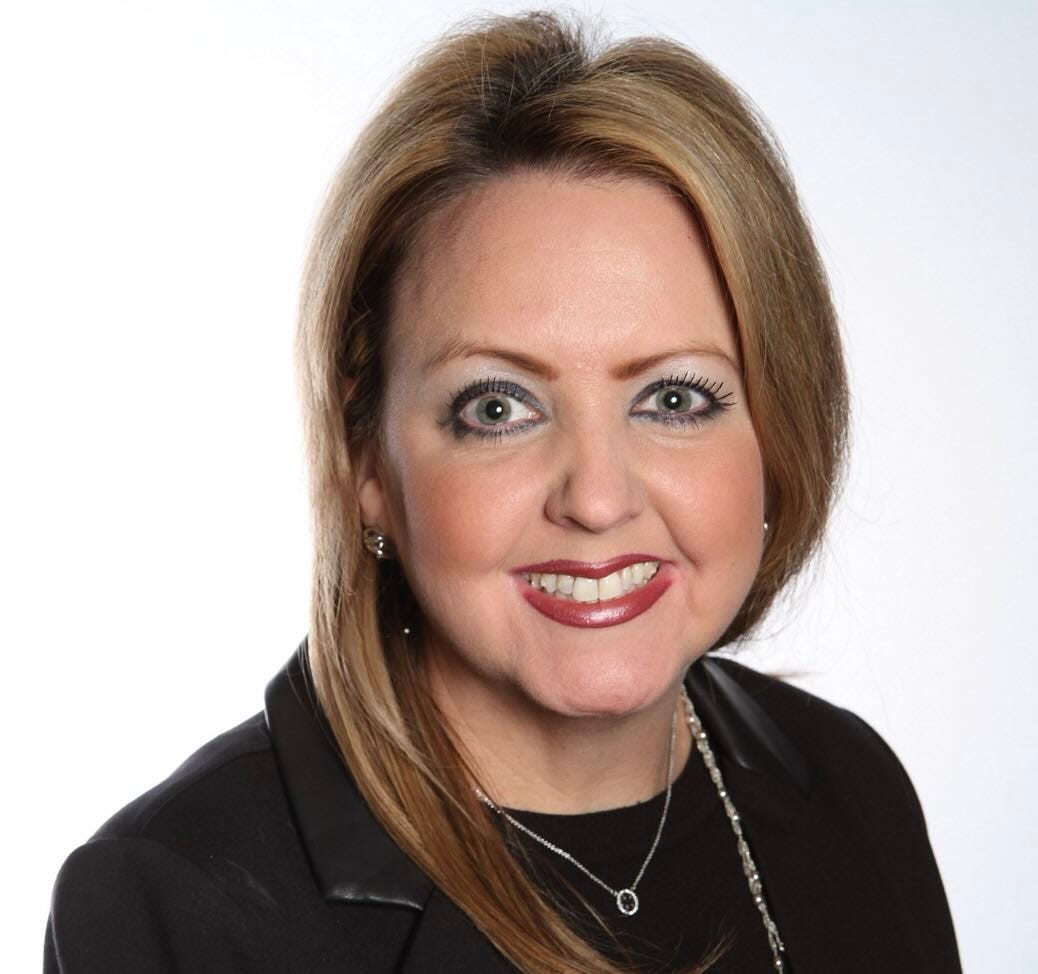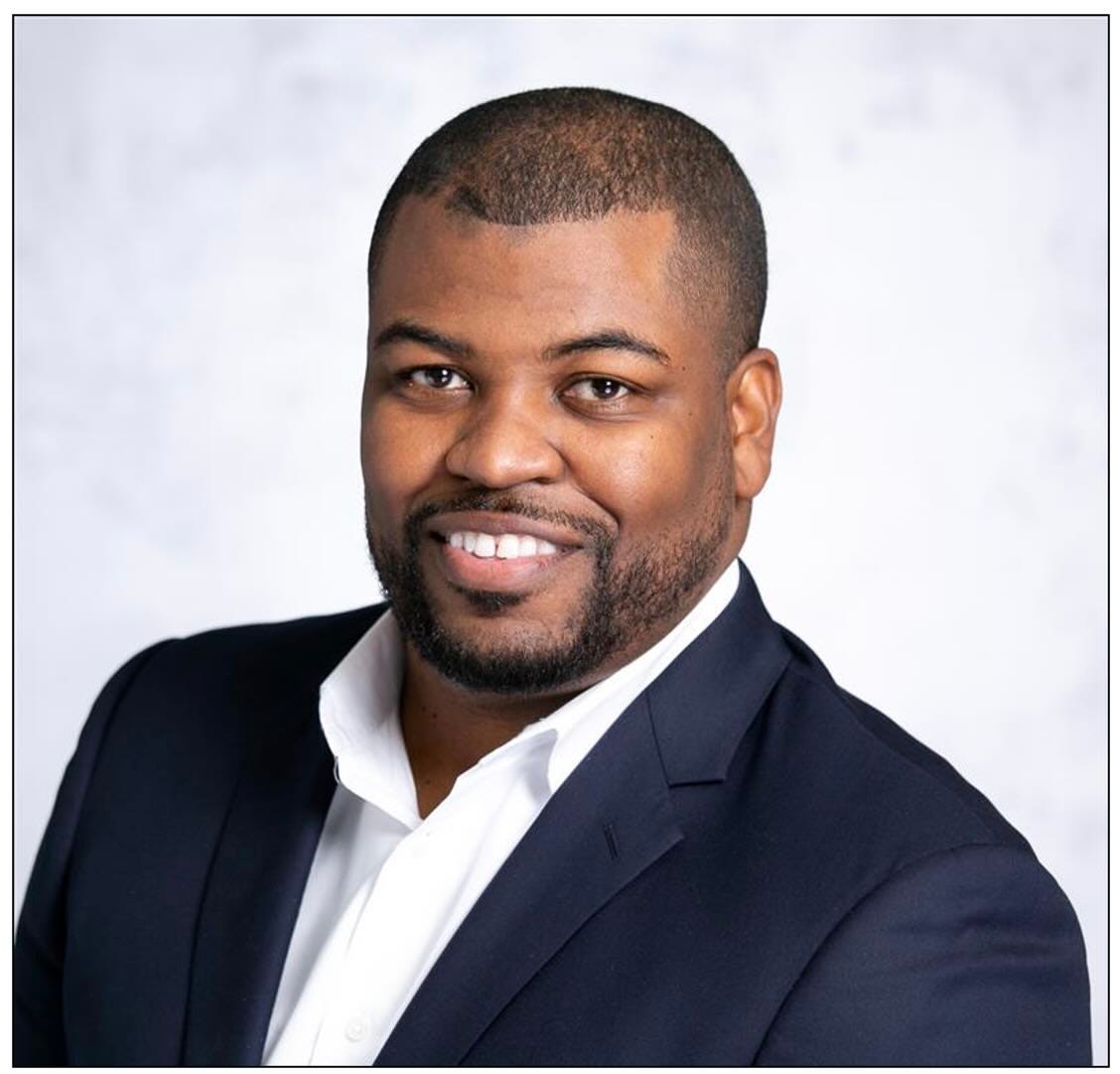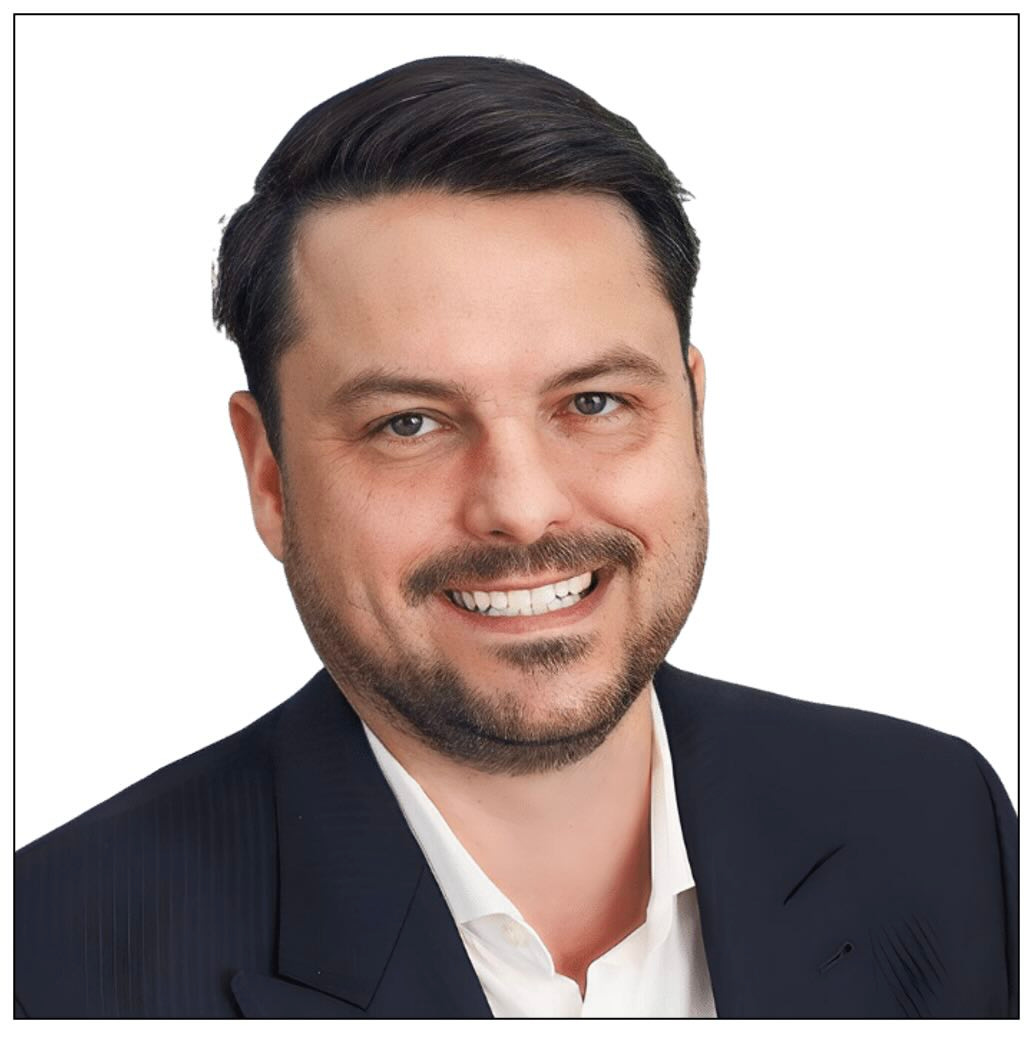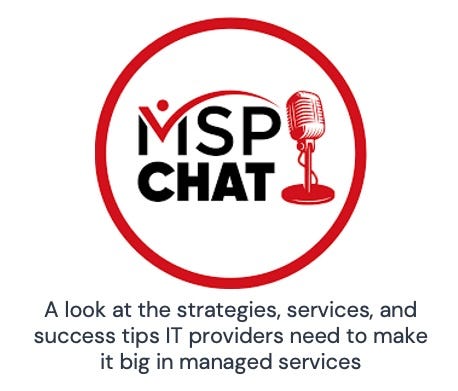MSPs Explore the Agentic Frontier
Microsoft calls agentic AI leaders “Frontier Firms.” Are MSPs among them? Plus: a new community at TD SYNNEX, where Sophos is investing in channel, and Cavelo’s ASM brand-building plans.
Travel! I love it, and there’s still no better way to track the SMB channel than experiencing it live from everywhere. All that movement can mess with my publishing schedule, though, which is why I’m a day late with this post. Given that I’ll be at Kaseya Connect in Las Vegas and then the RSA Conference in San Francisco next week, I just might be a day late again. Thanks for your patience!
Give Microsoft points for originality if nothing else. Choosing to call early adopters of agentic AI “Frontier Firms,” as they did in their 2025 Work Trend Index this week, was a refreshing break from the familiar leading edge/bleeding edge categories.
To earn that title, organizations must among other things make company-wide use of AI including at least some agents, have even bigger plans for agents in the future, and believe agents are an indispensable part of getting return on AI investments. Those that do, according to Microsoft, are:
Unusually successful: Or they are according to their employees, anyway. 71% of people who work at Frontier Firms say their company is thriving versus 37% of everyone else.
Exceedingly rare: Of the roughly 31,000 people in 31 countries Microsoft surveyed for the report, just 844 work at Frontier Firms.
Joining them will take time for everyone else. Reaching Frontierhood, as Microsoft defines it, is a three-step journey that begins with using AI assistants (which ConnectWise would call Sidekicks), proceeds toward handing a few, specific tasks off to agents (which Kaseya would call Cooper Bots), and then culminates with humans who Microsoft calls “agent bosses” overseeing large and largely autonomous agentic workforces.
In theory, that hard won end state is a productive, profitable place to be. In reality, getting there can be a little scary for reasons Microsoft misses by papering over the distinction between leading and bleeding edge, but that MSPs understand deep in their bones. Leading edge providers, most know, enjoy competitive advantage while earning fat margins. Bleeding edge providers risk landing in a courtroom over a hallucinatory misstep by one of their agentic techs.
As it happens, I was in a perfect place last week to get a feel for where MSPs are right now in relation to the agentic frontier: TMT’s IT Sales and Marketing Boot Camp in Dallas, where over 1,300 people serious about growth gathered to soak up success strategies and exchange best practices.
Any Frontier Firms among them? None that I met, but judging by a lot of anecdotal evidence and a couple of in-depth interviews, I’d say a lot of them are headed very, very cautiously in that direction.
They include Matt Rose (pictured), co-founder and chief experience officer of Winter Springs, Fla.-based Tech Rage IT, who’s been using the RPA half of the hyperautomation duo with little hesitation for years now but is just beginning to use the AI half.
“We’ve started to do a lot more with AI in the past probably six months,” he says, chiefly via software from Hatz AI, a maker of AI solutions for MSPs we’ve covered here before.
“We always had a bit of a worry with throwing all of our data into ChatGPT,” Rose says. The Hatz platform’s private model architecture has allayed those fears to the point that Tech Rage now uses AI for ticket creation, categorization, prioritization, and sentiment analysis, as well as to identify angry, impatient customers in need of immediate care. It’ll be a while, though, before Rose trusts agents to do technical work autonomously or interact too directly with customers.
“I don’t think I would want an AI answering the phone,” he says.
Which is interesting, because that’s one of the things Charles Henson, president/owner of Henson Computer in Nashville, Tenn., is doing with AI. When clients call the help desk overnight and on weekends, an AI-powered system gathers information through a series of troubleshooting questions. “It sounds like a human voice,” Henson says. If it can fix the problem itself, it does. If it can’t, it sends a text to the technical team, and whoever’s on after-hours duty follows up.
Henson is using software from Pia (a vendor we’ve written about once or twice) to onboard new users too. “It goes out to Microsoft 365, authenticates, creates the user, generates a temporary password, and then it goes into Active Directory and creates that user account,” he says, noting that offboarding is similarly automated in reverse. Now the company’s working on ways to remediate security vulnerabilities—like someone disabling MFA—autonomously.
By Microsoft’s definition, Henson is about midway to Frontierdom. Assuming no bad surprises along the way, he expects to get all the way there before long.
“We don’t have AI turned on at the point to where it just handles things for us, but that’s where I see us headed in the future,” Henson says. “Once we’ve used it at least for 12 months and it’s working and it’s doing all the executions that we ask it to do, then I can see us just spot checking it.”
More AI means more happy techs
Henson cites employee morale as an important benefit of leaning hard into AI. “A lot of the tasks that we’re getting AI primed and trained to do are a lot of the mundane tasks that we don’t enjoy doing,” he says. Rose’s techs feel the same way.
“They’re happier,” he says. “They can move on to things that make them think.”
And do so without worrying about being out of work someday. AI, Rose predicts, will reduce the number of new techs he needs but not render anyone on the payroll today redundant.
“We’re not expecting to automate people out of a job,” he says.
Neither is Henson. “Let’s be honest, AI is not going to do everything,” he says. “Technology continues to change, line of business applications continue to change, so AI is going to need to continue being built out to do other things it can do.”
That takes agent bosses, Microsoft might say, and is a much more interesting, retention-boosting task than resetting passwords. “If you can eliminate some of those Level 1 support tickets, then that’s going to free your engineers up to do things that they enjoy doing, which is going to make them want to stick around longer,” Henson says.
Want some more real-world examples of AI in action at MSPs?
Attend the panel I’m moderating Tuesday, April 29th, at the Kaseya Connect conference in Las Vegas. It starts at 2:00pm Pacific in Chairman’s 355 on level three of the MGM Grand conference center. Title: From POC to ROI: How MSPs are Making More and Spending Less with AI.
A few words about community
Last week’s Boot Camp was the first I’ve been to, which is kind of hard to believe given that it was also the 18th TMT has held and kind of a channel institution. Two things struck me about it:
Just how much attendees are there to learn. The hallways and expo hall seriously emptied out whenever breakouts began.
The palpable sense of community among the MSPs in attendance.
I wasn’t imagining that last part either. “I’ve been to other conferences where I meet people, but this is where I feel like I have friendships, and other conferences I just go and attend,” Henson says. “It’s truly like a large extended family.”
And the thing about families (sometimes to a fault) is that they share everything. So too, as ConnectWise CEO Manny Rivelo has learned in the months since he took that job, do communities.
“If there’s something that’s going on in my business that’s helping me grow, I share that with others and if others have something that they’ve used to grow their business, they’ll share that with other people as well,” Henson says.
Rose, who was attending his third Boot Camp, has had the same experience. “Everyone’s always willing to help people,” he says.
As we noted in regard to a different community last November, that kind of atmosphere breeds something extremely valuable at a time when partners increasingly need to collaborate on complex solutions involving sophisticated technologies: trust.
“The first time you meet somebody you don’t really know them. But you see them three months later at the next venue and you have coffee with them, or you’re sitting with them, or you’re talking about vendors. Over time, you get more trust in that relationship,” Henson says. “I wouldn’t say that it’s just instantly you have that trust. It comes in the relationship over time.”
And as further times passes, any hesitation you might have had about sharing an opportunity with them erodes, until before long you’re happily going to market together. Henson, for example, often enlists fellow TMT members in Texas to provide local support for clients with satellite offices there, and vice versa.
“It’s an extension of their organization,” Henson says. “We don’t try to take their clients away from them. It’s just like an honor code, if you will.”
Rose has yet to make that use of communities, but the wisdom he’s gleaned from them has been so valuable that he wishes he’d started participating earlier.
“It’s been a huge portion of our success,” he says. “I kind of think if I hadn’t been a little more tunnel vision early on, we could have had better growth.”
TD SYNNEX unveils the missing LINK
TD SYNNEX, as we wrote previously, is a big enough believer in the reinforcing interplay of communities and trust to have named Kristi Kirby its first-ever senior vice president of North American communities last year.
“If you look truly at the rate and pace that technology is evolving and how the landscape is changing, we realized there’s no way for partners to be experts at all that,” Kirby told me this week. “They’re looking for a solution, and they’re looking for help in terms of how to take advantage of the market opportunities.”
Communities, and the relationships they foster, are where they’re finding that help. Kirby (pictured), still new to the job when we discussed it five months ago, hinted then at emerging plans to make TD SYNNEX’s community an even more powerful vehicle for partner-to-partner collaboration but said I’d have to wait for details. The wait ended this week with the unveiling of PartnerLINK, a re-branded, re-tooled successor to the former CommunitySolv program offering expanded benefits tied to four core principles: Lead, Innovate, Network, and Knowledge.
Which spells LINK, part of why LINK is embedded in PartnerLINK’s name, along with the organization’s mission, as Kirby describes it, “to help pair folks and provide an environment where trust is a foundation and everybody understands that being in this together is better than going at this alone.”
Though the ultimate goal is to help everyone partner in whatever combination market needs demand, PartnerLINK is segmented into four sub-communities with similar interests and objectives: PartnerLINK Ascend, for U.S. providers of AI, security, cloud, and analytics solutions; PartnerLINK Advantage, for U.S. providers of the advanced infrastructure that Ascend solutions run on; PartnerLINK Canada, for partners north of the border; and PartnerLINK Public Sector, for specialists in … well, you can probably guess what.
An online hub designed to help members find and collaborate with one another is coming soon. Like much about PartnerLINK, it will be a modernized version of a time-tested resource.
“That’s the beautiful thing with communities. They’re not a new concept in the sense that they’ve been around for a really long time,” Kirby says. “We said there’s no need to break that foundational formula, but how do we take that as a foundation and go ahead and enhance it?”
Big (but not surprising) plans from the new channel chief at Sophos
TD SYNNEX isn’t the only channel player sold on the power of community. The new channel chief at Sophos is bought in too.
“It’s very difficult to get to the MSP market in the channel without a strong community,” says Chris Bell (pictured), the security vendor’s senior vice president of global channels, alliances, and corporate development since February. “Enablement across the MSP community is how MSPs grow.”
Hence the recent move of Scott Barlow, formerly VP of global MSP and cloud alliances, into the newly created role of chief evangelist and global head of community.
“Scott’s going to be leading many of our enablement activities and our enablement strategy for MSPs, and ensuring that they have what they need to be successful,” Bell says.
Prior to assuming his current post, Bell was chief strategy officer at Secureworks, the MDR specialist Sophos officially acquired two months ago. Many of his thoughts and plans for the future, including his faith in community, echo recurring themes familiar to regular Channelholic readers:
1. Ecosystems. As analyst Jay McBain of Canalys will happily tell you, businesses are increasingly combining products and services from an ecosystem of companies with specialized, complementary expertise when building solutions. Bell is well aware of that phenomenon and building it into his plans for the future.
“Just like we have a breadth of portfolio, we are going to have a breadth of routes to market,” he says. “You will see us lean in with our cyber insurers as an example, you’ll see us lean in with our marketplace partners, and you’re going to see us lean in with GSIs.”
2. Marketplaces. Big dollars are flowing through online marketplaces today and the numbers are only growing, from $45 billion this year to $85 billion in 2028, according to Canalys. Bell intends (very much in alignment with my advice on the topic) to support every such site its partners care about.
“Our stance is we’re going to meet you where you’re going to evolve your business,” he says. “We have integrations with all the top distribution marketplaces as well as the MSP marketplaces, and we have a growing practice around the hyperscaler marketplaces like AWS Marketplace as well as Azure.”
Sophos will invest in enhancing those integrations this year and beyond to ensure that partners have access to more of the same usage data and other telemetry non-marketplace buyers can view already.
3. MSPs as MVPs. We recently explained in four crisp bullet points why so many security vendors are investing so much money in MSPs right now, and further explained in that and another recent story why that’s extra true of MDR vendors like N-able and ESET.
As well as Sophos, which has over 29,000 MDR customers at present. “We’re growing at over 37% every year,” Bell says. “It’s the fastest-growing space for our business.” MSPs are the number one reason why.
“If we continue to lean into our MSP route to market, which is our fastest-growing route to market, that’s going to be a great way for us to sell more MDR as well as enable MSPs to build their own MDR service offerings,” Bell says.
4. Vendor consolidation. Though the numbers shifted ever so slightly in the opposite direction last year, MSPs are doing more business with fewer vendors these days than they have in years. Bell has this trend squarely in view too and understands that Sophos must work harder to earn and retain partner loyalty as a result of it.
“You have to add value across the entire life cycle,” he says, including in the form of beefed-up partner program benefits.
“They expect to be rewarded, whether it be with MDF, rebates, or trying to give enablement in a specific fashion that works for their businesses,” Bell observes. “You’re going to hear a lot more from that arena as we continue to evolve our partner programs.”
Partner satisfaction looms larger in a world of limited vendor relationships too. Bell’s plan there includes rolling out an updated (dare I say Ingram Micro-esque) partner portal with more self-serve functionality.
“Many of our partners prefer not to pick up the phone and call their channel account manager,” Bell notes. “They just want to do it on their own.”
Innovation like that isn’t cheap, but it’s cheaper in the long run than losing choosy partners who have more options—and leverage—when selecting vendors than before.
“Competition in any environment is a great thing because it forces everyone to up their games,” Bell observes. “That’s what will create the best security outcome for customers, if the entire cybersecurity ecosystem is upping their games.”
Cavelo’s brand building strategy for attack surface management
New dangers attract new solutions and solution categories in security all the time. The threat posed by out-of-control machine identities, for example, is attracting attention from vendors of various kinds even before agentic AI blows the issue beyond all current proportions.
But in the world of SMB security at least, the motivation behind many new solutions, regardless of the risk they’re meant to mitigate, is a desire to create simpler, multi-tenant, affordable versions of solutions normally available only to corporate IT. That’s certainly what led Jon Murchison and Kyle Hanslovan to help found Blackpoint Cyber and Huntress, respectively, after working at the NSA. It’s also what led David Primor, former director of the Israeli government’s cyber authority, to co-found Cynomi, the vCISO platform we’ve discussed here before that announced a $37 million Series B funding round last week.
And it’s the inspiration behind attack surface management vendor Cavelo’s campaign to do for SMBs and MSPs what Qualys, Tenable, and Varonis do for big business IT departments.
“Those are the big guys out there,” observes Larry Meador, who became the company’s first-ever channel chief in January. “They’re the enterprise players, but they also have enterprise price tags. So we’re giving that level of quality at an MSP-friendly price point.”
Cavelo’s approach to realizing that goal begins with asset discovery, data discovery, and identity access management capabilities designed to help MSPs inventory all the devices, SaaS apps, cloud instances, and sensitive information on a customer’s network and see who can view or edit it. Additional functionality then helps them find and prioritize vulnerabilities in that landscape. The prioritization component is key, notes CEO James Mignacca (pictured), a former MSP, given just how many issues Cavelo’s software typically identifies.
“There’s too much risk out there,” he says. “You have to look at it in a multidimensional view in your organization to really break down where should I be spending all my time remediating and lowering that risk vector to try to prevent a data breach.”
That most businesses have trouble simply mapping their attack surface in the era of hybrid work, cloud-based everything, and IoT just makes that need more pressing. “They don’t know what devices are on the network, they don’t know where the sensitive data is, where they are at risk,” Meador observes. “How do you protect what you can’t see?”
Large organizations have been asking that question for years, but MSPs (as Liongard will no doubt attest as well) are asking it more frequently now too. Meador’s assignment in his new role is making sure more of them know there is an answer aimed specifically at them.
“This is, as I call it, the brand building year,” he says. “We may not be as popular as a Kaseya or a ConnectWise, but I think by the end of this year a whole lot more people are going to know not only who Cavelo is but what Cavelo does.”
Certificate tsunami
Cavelo helps MSPs manage attack surface. How big a stretch is it for me to say that MSP Chat, the podcast I co-host, helps MSPs expand their insight surface?
OK, big stretch, but you will learn a lot by listening to the audio edition or watching it on YouTube. This week’s episode features Mark Bloom of Sectigo, who you met here a few weeks ago, discussing the certificate tsunami that’s about to turn TLS certificate management from a nice source of extra MSP income to a monumental end user need.
Pre-RSAC security news
The deluge of announcements from next week’s RSA Conference in San Francisco starts Monday, but as always a few early birds got news out in advance.
CrowdStrike has added a privileged access module to its Falcon Identity Protection app.
Bitdefender’s new GravityZone Proactive Hardening and Attack Surface Reduction system is designed to tailor hardening efforts user by user by user.
Great minds think alike. N-able sees a connection between vulnerability management and patching and so too does NinjaOne.
One new Proofpoint solution combines impersonation protection, risk-based employee guidance, and more. The other combines DLP, DSPM, and unified threat management.
1Password has added agentic AI security, among other things, to its Extended Access Management solution.
Expect a lot of agentic AI announcements next week, like this one about a new identity security solution from Rubrik.
Or this one about SandboxAQ’s new AQtive Guard.
Or this one about the addition of ChatGPT Enterprise support to Zenity’s agentic AI security platform.
IRONSCALES’s email security solution now has deepfake protection.
Stellar Cyber has reversed the AI-augmented, human-run SOC model with a human-augmented, AI-run SOC solution.
Object First now has consumption-based pricing for its immutable Veeam storage solution.
Speaking of Veeam, it now integrates with CrowdStrike as it has for a while with Sophos, and its newest solution backs up Microsoft Entra ID.
The newest edition of Keeper Security’s browser extension features enhanced privileged access management support and AI-powered autofill improvements.
Cohesity’s new RecoveryAgent is designed to automate cyber recovery preparation, testing, compliance, and response.
Delinea has built new AI protection features into its identity security solution.
Hornetsecurity has a new add-on for Amazon SES Mail Manager.
Last Pass says it’s simplified identity management for SMBs.
The brand new Axonius Exposures combines vulnerability management with security findings, asset intelligence, and business context in a single platform.
Developers can now tap into Checkmarx’s application security posture management service directly.
WatchGuard has very publicly committed to reaching net-zero carbon emissions by 2040 by signing The Climate Pledge.
Check Point and Illumio have inked a new alliance pact.
Also worth noting
AvePoint’s latest MSP-friendly enhancements aim to simplify the user lifecycle management and device management capabilities of its Elements platform.
Top Down Ventures (who you’ve read about here before) has a new educational platform for individual, family, and institutional investors.
Channel Program’s new BetterTracker unifies expense, contract, and SaaS subscription management.
Compliance Scorecard’s solution is now available via Pax8.
Using AI, cyber warranty vendor Cork’s new Cyber Insurance Policy Analyzer spots coverage gaps in cyber liability policies in under two minutes.
GoTo’s Grasshopper virtual phone system provides a unified “Conversations view” of calls, texts, voicemails, and virtual faxes.
Reinvent Telecom has three new execs.



